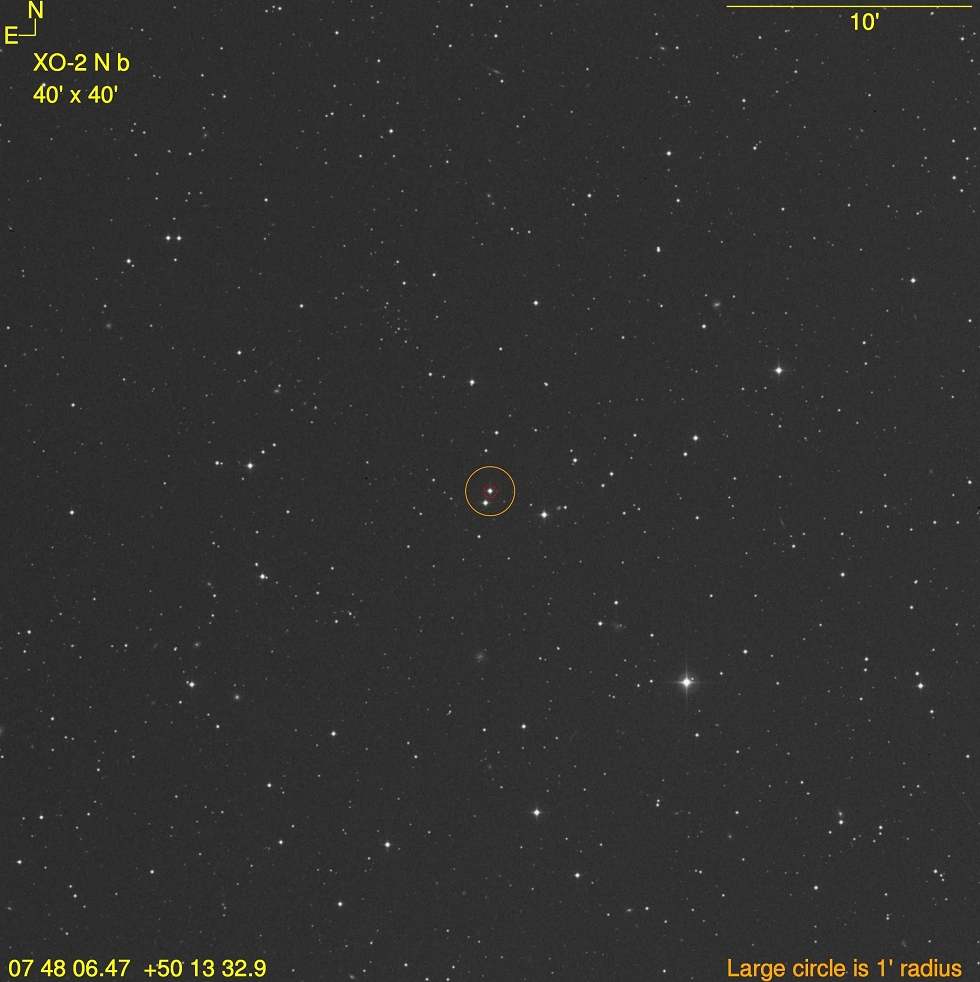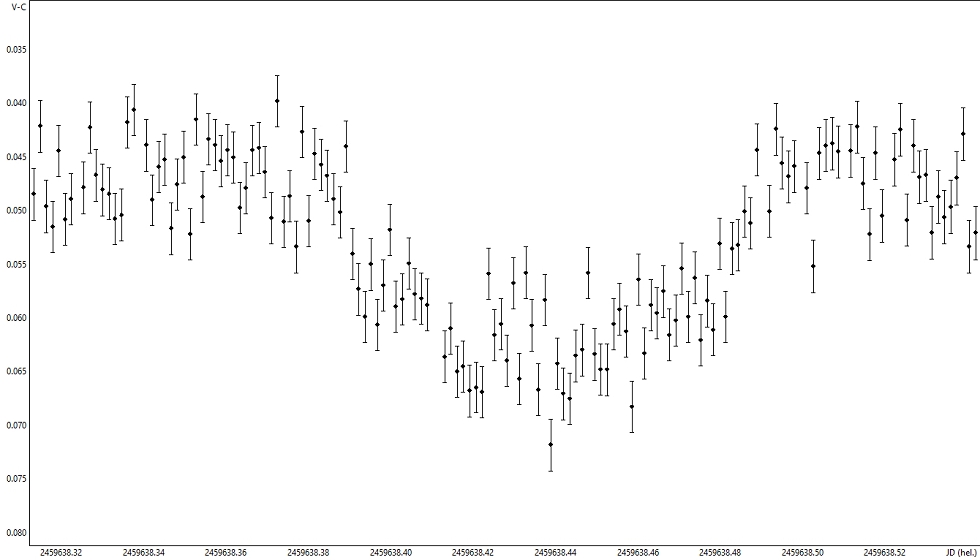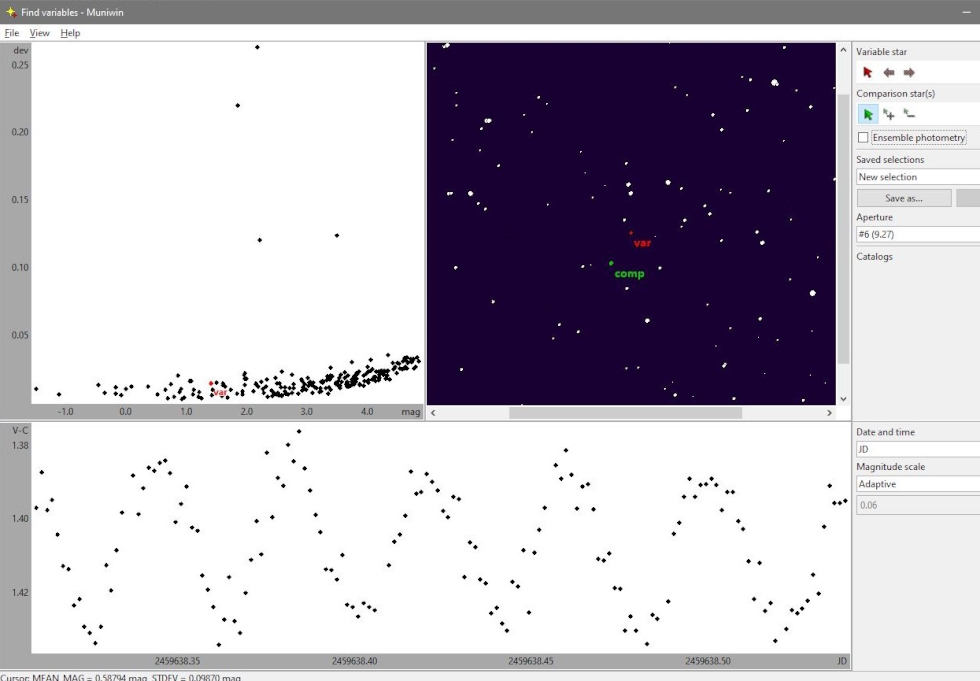By Thomas Grunge
About 500 light-years away in the constellation Lynx, two Sun-like stars (yellow dwarfs) orbit each other. Both stars, XO-2 N and XO-2 S, have a total of three exoplanets, which were detected in 2007 using the transit method. XO-2 N b is a gas giant orbiting a star of spectral class G. The mass of the exoplanet is about 0.566 Jupiter masses. It takes about 2.6 days for a complete orbit around its star. The distance is only 0.0368 AU (5.5 million km).

Due to the very short distance to its parent star, the exoplanet, which is about the size of Jupiter, is heated to an average surface temperature of 1300 Kelvin.
On https://astro.swarthmore.edu the position of the star and the time of the transit were determined.
The star has a visual magnitude of 11.1 mag, which is attenuated by the exoplanet around 0.0106.

With amateur means, the exoplanet XO-2 N b was observed by photometric measurements on 24.2.2022.

Technical data:
7“ Maksutov-Teleskop @ F/6.3, SBIG ST10 @-20°C, Luminanzfilter, 120 Sec.exposure, 1×1 binning.
150 Lights, 16 Darks, 16 Flats, 16 Flatdarks
Processing with Muniwin 2.1
The Muniwin data was included in the ETD – Exoplanet Transit Database transmitted and evaluated.
The results ETD agree relatively well with the predictions of https://astro.swarthmore.edu .

As icing on the cake, I was able to detect another variable star in the dataset, which I still need to determine more precisely.
